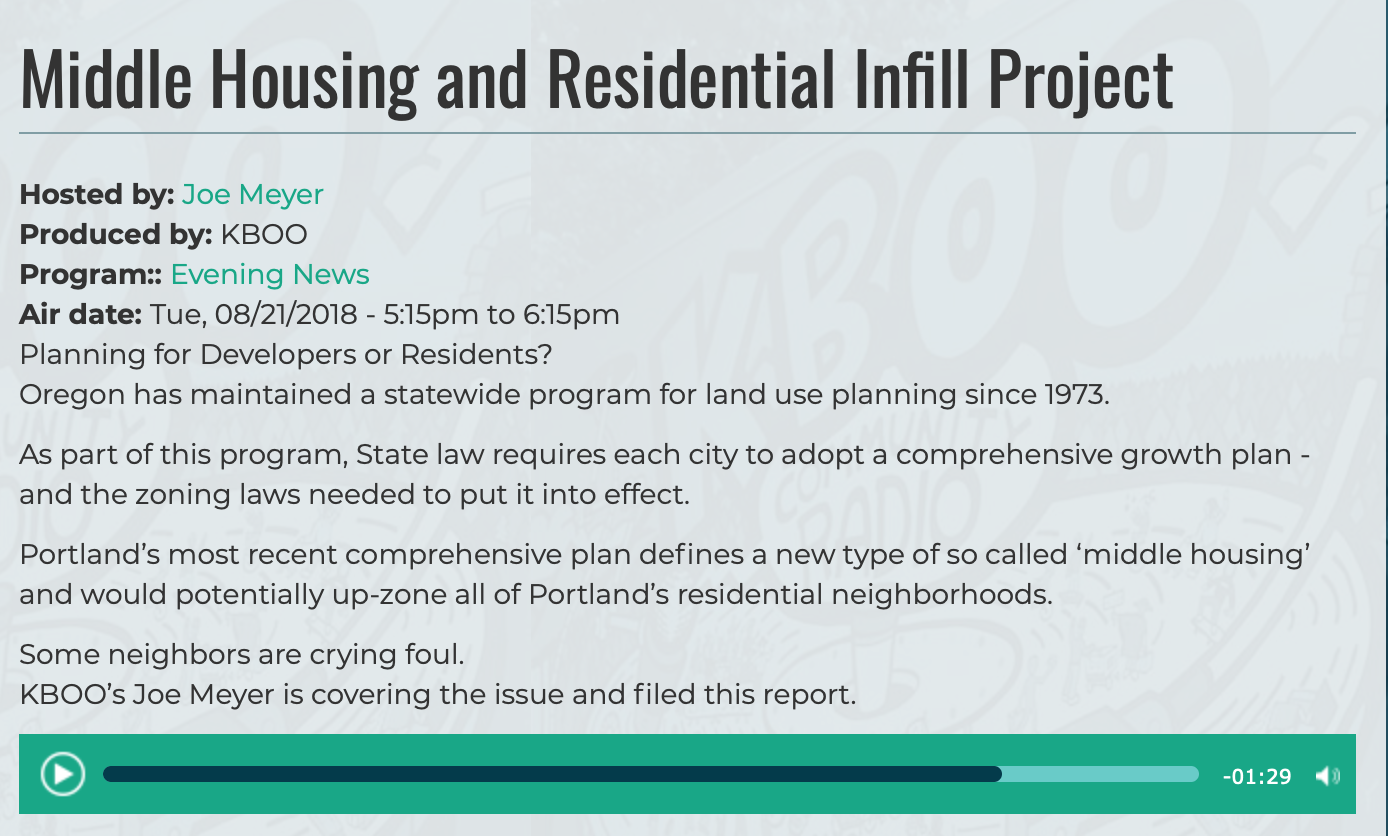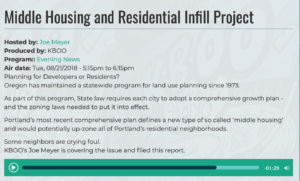We know the Residential Infill Project is supported by real estate developers, the lawyers and planners and consultants who work for developers, the politicians who get donations from developers, and the YIMBY groups that are created, staffed, and funded by developers.
Suppose we found an expert urban planner who isn’t in league with the developers? What would he or she tell us about RIP? KBOO interviewed one, listen here.
https://kboo.fm/media/67329-middle-housing-and-residential-infill-project
“Comprehensive planning is supposed to be done with lots of information. You gather facts about the situation, the community, the demographics, the needs, the desires of the community, and then you draft goals and policies and then ultimately you implement them. But in this instance it was rather free of public engagement. The middle housing policy just kind of appeared out of nowhere and it is a transformative policy because what happens it it authorizes the city to go and densify – increase the density – of single family neighborhoods that previously were single family and alowed for one home and an ADU or accessory dwelling unit. The policy allows the city to go considerably further and encourages them to do so. So now we have the Residential Infill Project and that is looking at re-zoning or upzoning about 60% of the city’s single-family homes. Potentially it could be expanded to all homes, that would be an easy step and maybe a step they could do in the near-term. [note: RIP now covers 96% of Portland houses.]”
“I don’t see that there is really a base of support amongst the public or the community, it seems to be coming from some specific sources, development interests who are interested in getting into redevelopment.”
“[Planning] is supposed to be an orderly process, you gather information and formulate a plan based on that information, an evidence-based, factual-based, public process-based. But what happened here is that the middle housing policy was introduced in April of 2016 and the plan was adopted, officially and finally, by the council in June of 2016, just a couple of months. The thing about this policy is, because it has such significant repercussions, it really should have gotten a lot of public process instead of almost no public process.”
“So what you have is essentially the potentially most significant part of the Comprehensive Plan being introduced at the last minute.”
“[The Land Conservation and Development Commission] are appointed members, but they are appointed from a certain perspective, not necessarily a community or citizen or neighborhood perspective. Some of them are from a more development or business orientation, so in spite of the fact that they are volunteers, they may not be especially sympathetic to neighborhood issues.”
“The public support for the land use program is based on the fact that we beleive as citizens that we are going to be engaged, that we have a voice. What this decision shows, the rejection of all our issues, is that in fact we don’t have a voice, that the city can do whatever it wants regardless of how much citizen input there is, of the tenor of the citizen input.”
Is that right? Can the city re-zone all of our houses with a last-minute amendment, without most Portlanders even knowing about it, over the objections of those who did hear about it? Well, let’s find out. SPEAK UP. Use the “Stop RIP” button to send your email to the Mayor and the other City Commissioners, telling them that you oppose the Residential Infill Project. Unlike the commissions who can be and often are appointed from the real estate industry, the Mayor and City Council are elected officials and subject to losing re-election – or even being recalled.

